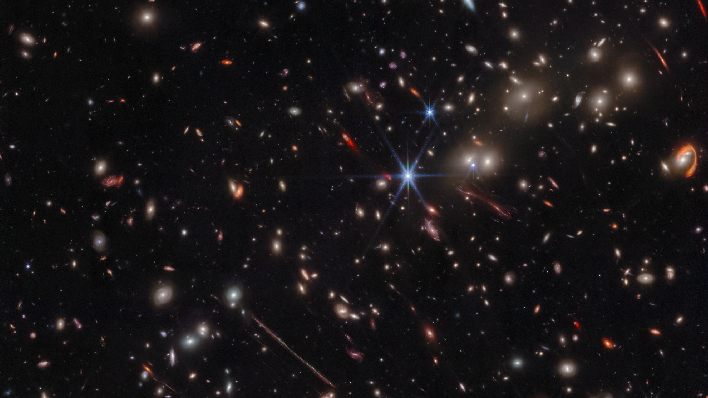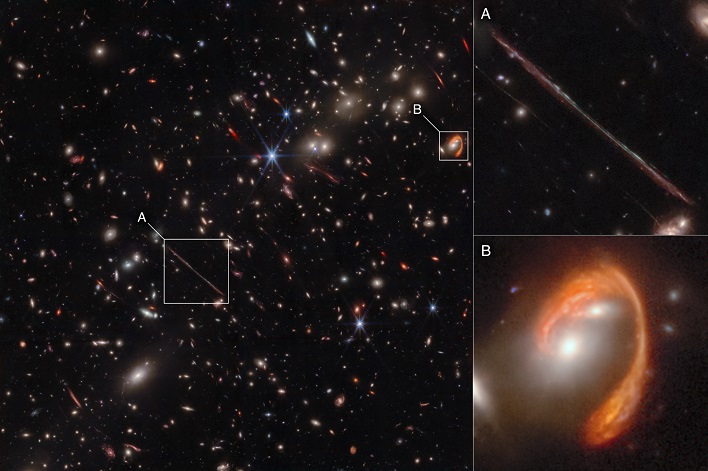NASA's Webb Telescope Shares A Thrilling New Image Of El Gordo Cluster's Hidden Features

El Gordo is considered to be a 'cosmic teenager' that existed when the universe was a mere 6.2 billion years old. The iconic cluster is the most massive cluster known to exist at that time, with its Spanish meaning being the 'Fat One.' El Gordo was targeted by JWST due to it acting like a natural magnifying glass through a phenomenon known as gravitational lensing.
"Lensing by El Gordo boosts the brightness and magnifies the sizes of distant galaxies. This lensing effect provides a unique window into the distant universe," explained Brenda Frye of the University of Arizona and co-lead of the PEARLS-Clusters branch of the Prime Extragalactic Areas for Reionization and Lensing Science (PEARLS) team.
One of the features that immediately stood out was a bright arc, which has been nicknamed "El Anzuelo", or "The Fishhook". The light from this distant galaxy took an incredible 10.6 billion years to reach Earth, and its red color is a result of a combination of "reddening from dust within the galaxy itself and cosmological redshift due to its extreme distance," according to a NASA press release.
"We were able to carefully dissect the shroud of dust that envelops the galaxy center where stars are actively forming," remarked Patrick Kamieneski of Arizona State University. "Now, with Webb, we can peer through this thick curtain of dust with ease, allowing us to see firsthand the assembly of galaxies from the inside out."

"It's almost impossible to see lensed red giant stars unless you go into the infrared. This is the first one we've found with Webb, but we expect there will be many more to come," added Jose Diego of the Instituto de Fisica de Cantabria in Spain.
Other interesting objects can also be seen throughout the image. Frye's team was able to identify five multiply lensed galaxies that appear to form a baby galaxy cluster from about 12.1 billion years ago.
"Gravitational lensing was predicted by Albert Einstein more than 100 years ago. In the El Gordo cluster, we see the power of gravitational lensing in action," remarked Rogier Windhorst of Arizona State University. He added, "The PEARLS images of El Gordo are out-of-this-world beautiful. And, they have shown us how Webb can unlock Einstein's treasure chest."

